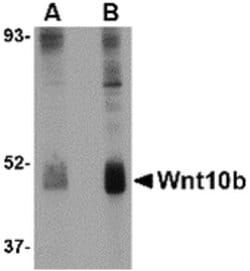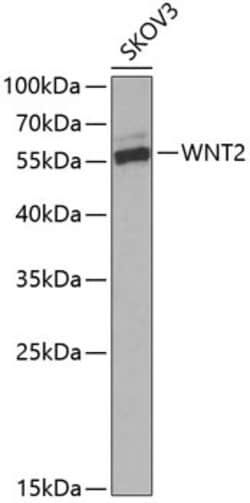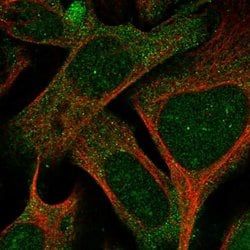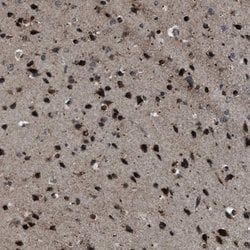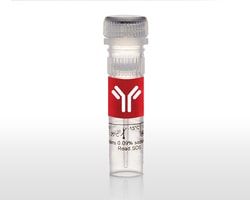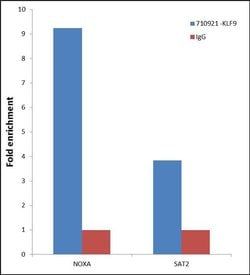WNT16 Recombinant Polyclonal Antibody (17HCLC), Invitrogen™
Manufacturer: Thermo Scientific
Select a Size
| Pack Size | SKU | Availability | Price |
|---|---|---|---|
| Each of 1 | 71-089-3-Each-of-1 | In Stock | ₹ 44,989.50 |
71-089-3 - Each of 1
In Stock
Quantity
1
Base Price: ₹ 44,989.50
GST (18%): ₹ 8,098.11
Total Price: ₹ 53,087.61
Antigen
WNT16
Classification
Recombinant Polyclonal
Concentration
0.5 mg/mL
Formulation
PBS with 0.09% sodium azide; pH 7.2
Gene Accession No.
Q9UBV4
Gene Symbols
Wnt16
Immunogen
Peptides corresponding to Human WNT16 (aa 61:72, 261:276, 241:254)
Quantity
100 μg
Primary or Secondary
Primary
Target Species
Human
Product Type
Antibody
Isotype
IgG
Applications
Immunohistochemistry (Paraffin), Western Blot
Clone
17HCLC
Conjugate
Unconjugated
Gene
Wnt16
Gene Alias
E130309I19Rik; Protein Wnt-16; wingless-related MMTV integration site 16; wingless-type MMTV integration site family member 16; wingless-type MMTV integration site family member 16b; wingless-type MMTV integration site family, member 16; Wnt family member 16; Wnt16
Host Species
Rabbit
Purification Method
Protein A
Regulatory Status
RUO
Gene ID (Entrez)
51384
Content And Storage
Store at 4°C short term. For long term storage, store at -20°C, avoiding freeze/thaw cycles.
Form
Liquid
Description
- This antibody is predicted to react with Monkey, Cat, Bovine and Pig
- Recombinant rabbit polyclonal antibodies are unique offerings from Thermo Fisher Scientific
- They are comprised of a selection of multiple different recombinant monoclonal antibodies, providing the best of both worlds - the sensitivity of polyclonal antibodies with the specificity of monoclonal antibodies - all delivered with the consistency only found in a recombinant antibody
- While functionally the same as a polyclonal antibody - recognizing multiple epitope sites on the target and producing higher detection sensitivity for low abundance targets - a recombinant rabbit polyclonal antibody has a known mixture of light and heavy chains
- The exact population can be produced in every lot, circumventing the biological variability typically associated with polyclonal antibody production
- The WNT gene family consists of structurally related genes which encode secreted signaling proteins
- These proteins have been implicated in oncogenesis and in several developmental processes, including regulation of cell fate and patterning during embryogenesis
- This gene is a member of the WNT gene family
- It contains two transcript variants diverging at the 5' termini
- These two variants are proposed to be the products of separate promoters and not to be splice variants from a single promoter
- They are differentially expressed in normal tissues, one of which (variant 2) is expressed at significant levels only in the pancreas, whereas another one (variant 1) is expressed more ubiquitously with highest levels in adult kidney, placenta, brain, heart, and spleen
- WNT15 is also a ligand for members of the frizzled family of seven transmembrane receptors.
